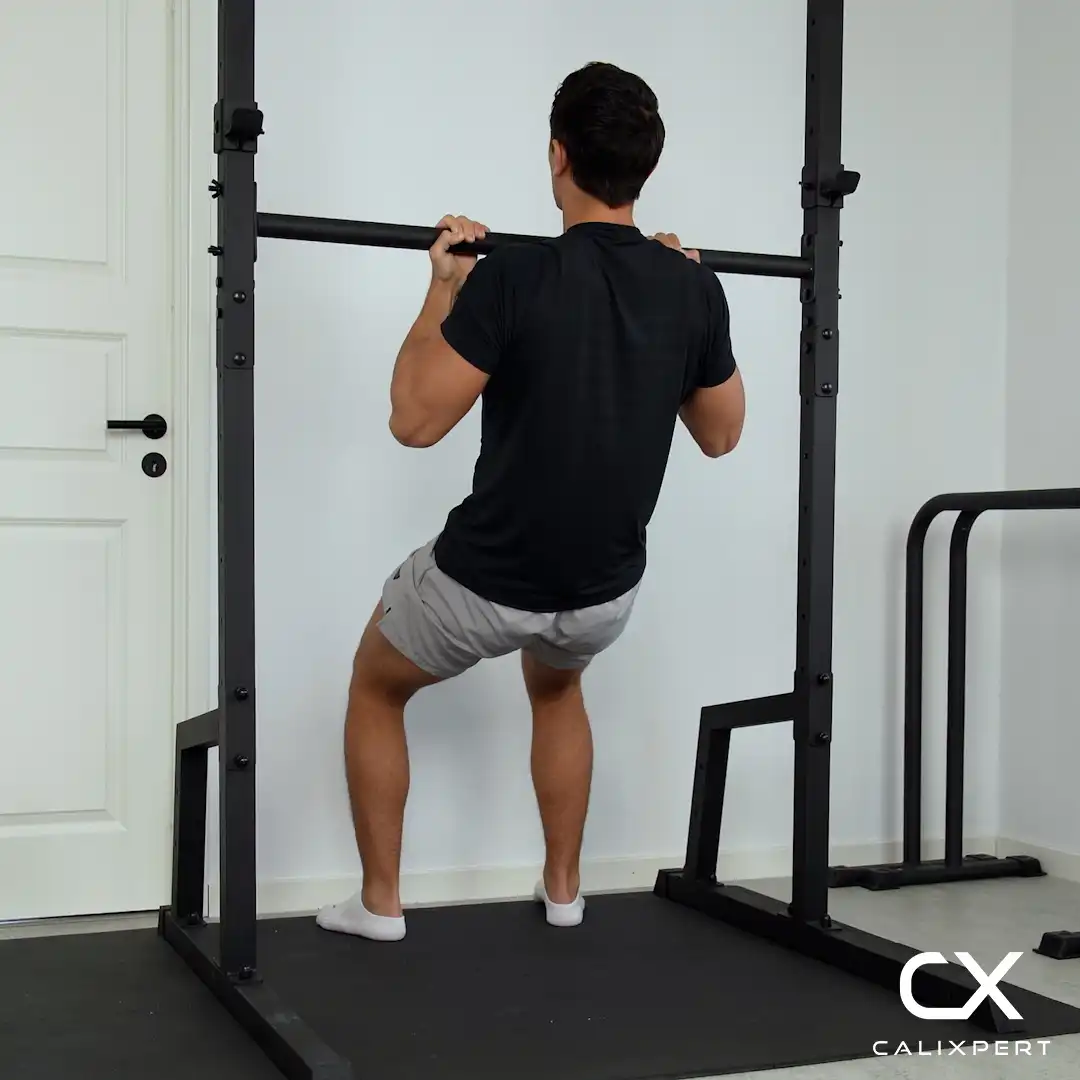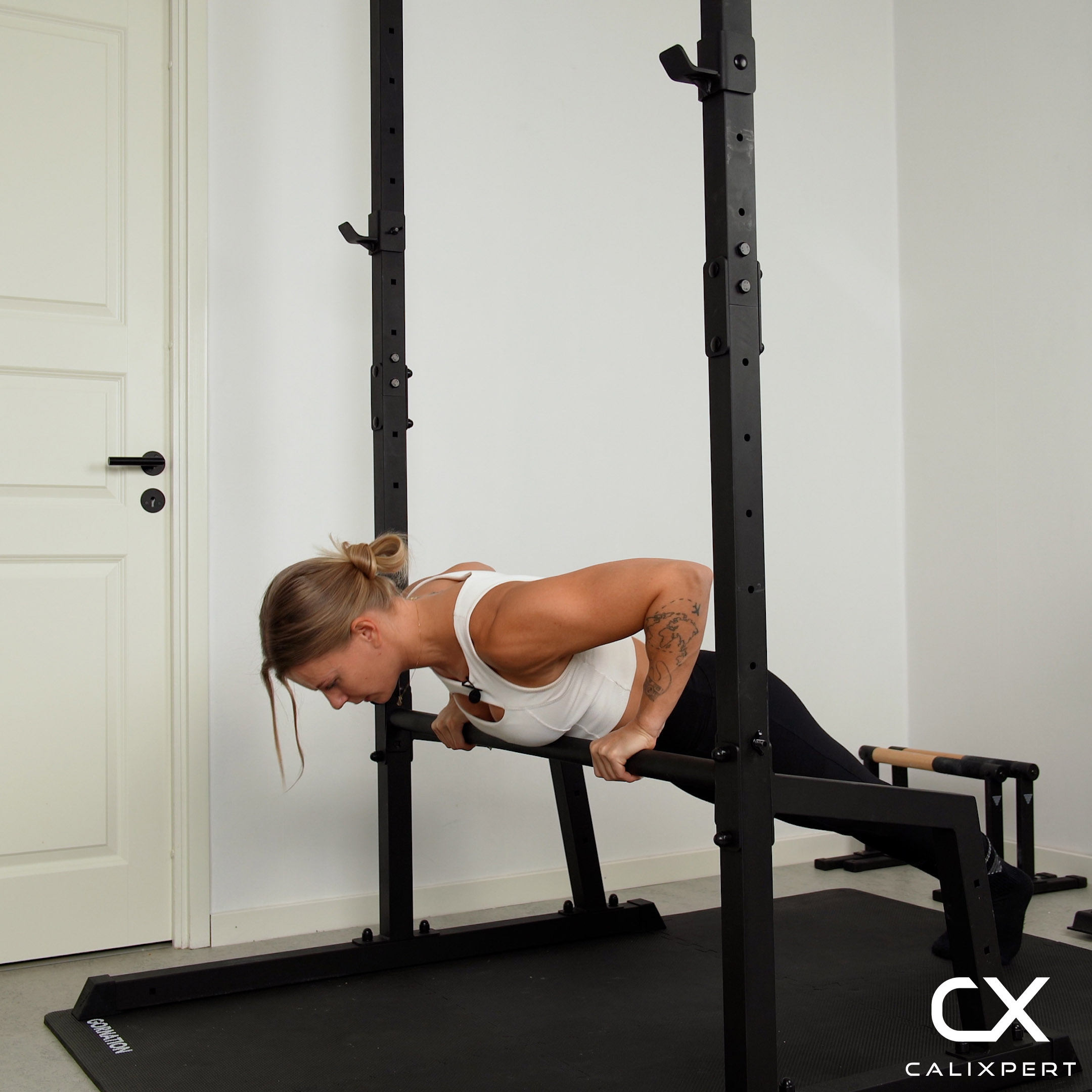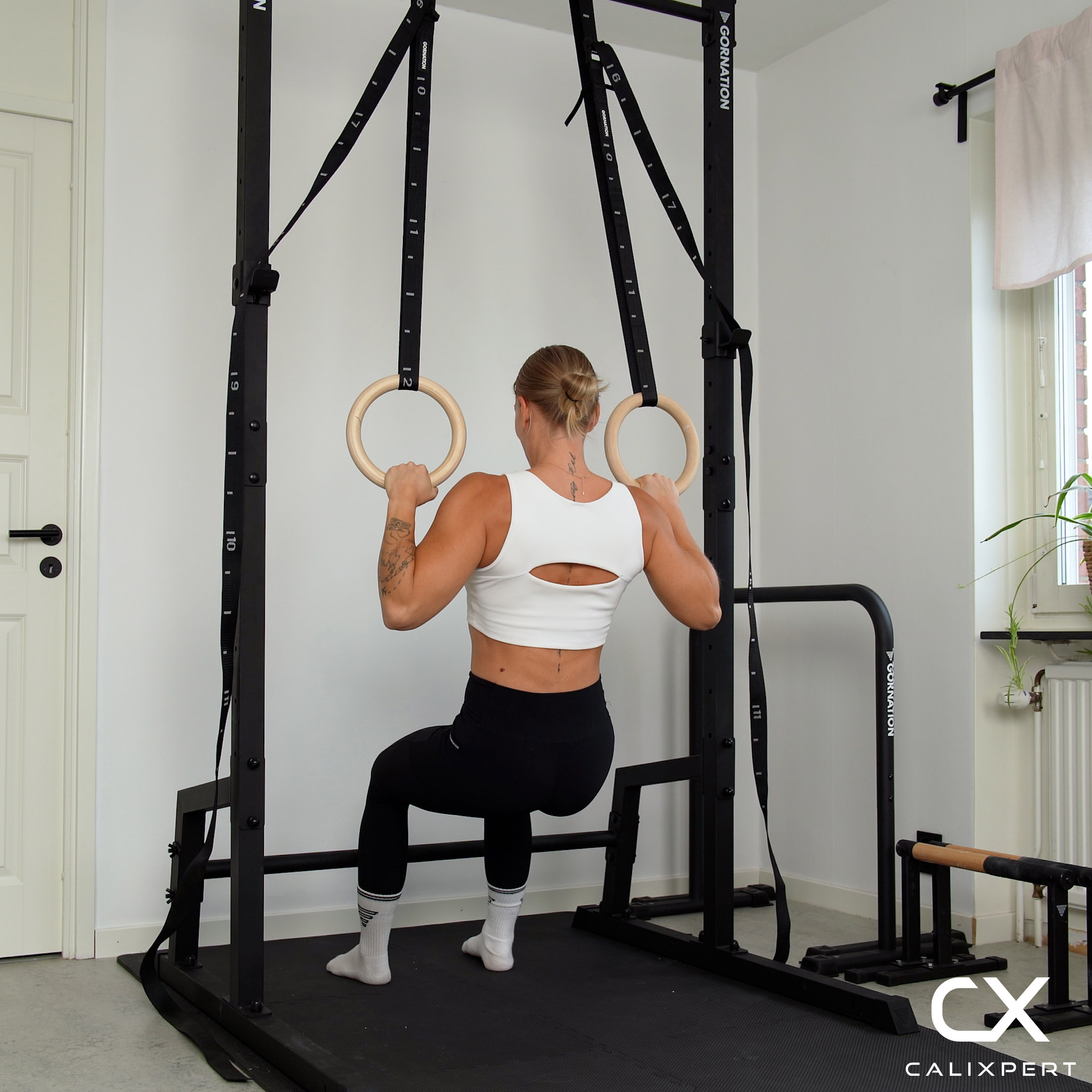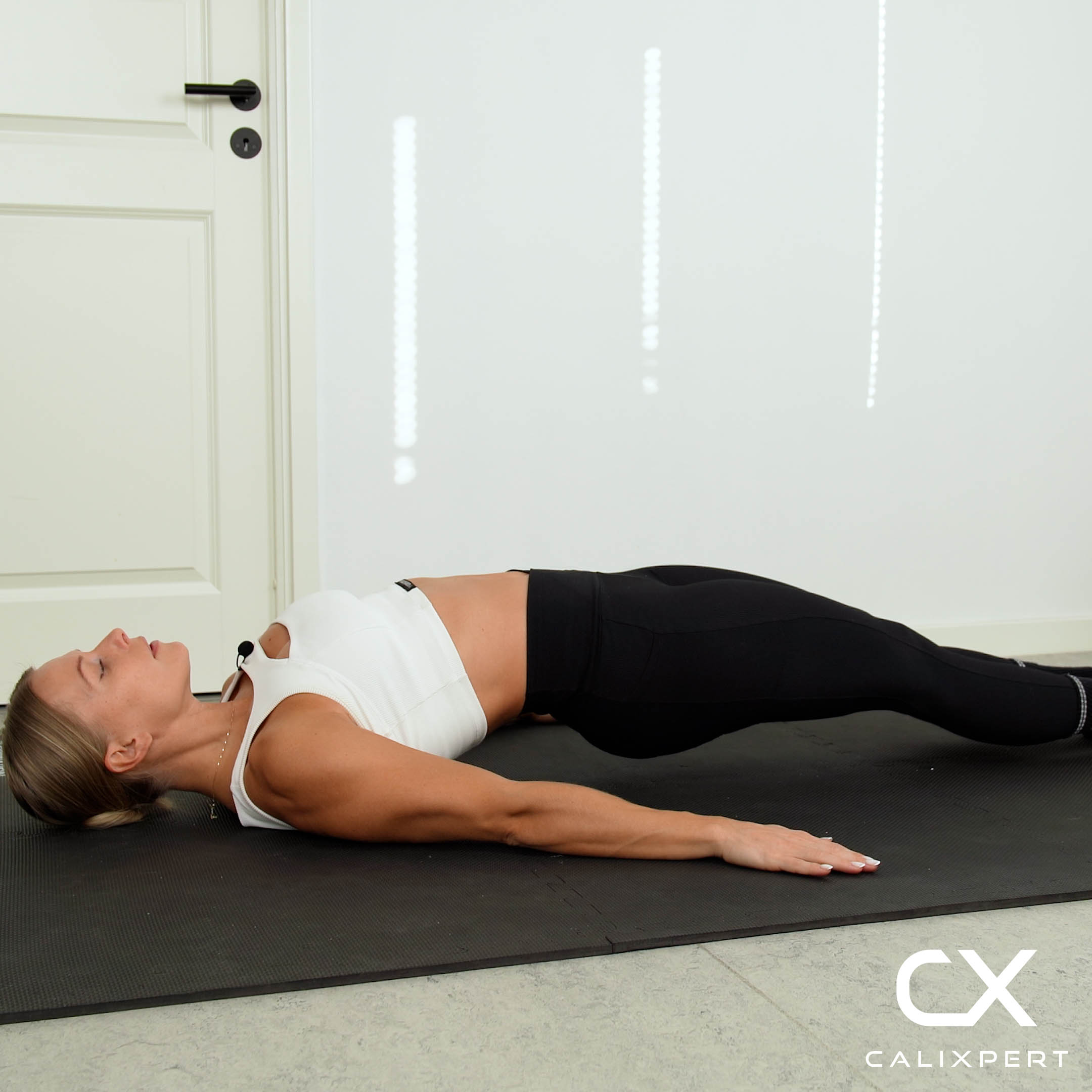Negative Hanging Leg Raises
How to Do Negative Hanging Leg Raises
Negative Hanging Leg Raises are an advanced core exercise that focuses on controlling the lowering phase of the movement. This exercise helps build core strength and stability by engaging the lower abdominal muscles. Proper form is crucial to maximize benefits and prevent injury.
Step By Step Guide to Properly Execute Negative Hanging Leg Raises
- Starting Position
- Hang from a pull-up bar with an overhand grip, arms fully extended, and feet off the ground. Engage your core and keep your body stable.
- Execution
- Lift your legs up towards your chest by flexing at the hips, keeping your legs straight or slightly bent. Focus on using your core muscles to lift your legs.
- Top Position
- Pause briefly when your legs are at the highest point, ideally parallel to the ground or higher, ensuring your core is fully engaged.
- Lowering Phase
- Slowly lower your legs back to the starting position with control, resisting gravity to maximize muscle engagement. Keep your core tight throughout the descent.
Benefits of Negative Hanging Leg Raises
- Enhances core strength and stability.
- Targets lower abdominal muscles effectively.
- Improves grip strength and shoulder stability.
- Aids in developing better control and muscle endurance.
Common Mistakes to Avoid
- Swinging the body to gain momentum instead of using core strength.
- Not controlling the lowering phase, which reduces effectiveness.
- Arching the back excessively, leading to potential strain.
- Holding the breath; instead, maintain a steady breathing pattern.
Follow these steps and tips to master Negative Hanging Leg Raises with proper form and efficiency.
FAQ About Negative Hanging Leg Raises
To improve your form in negative hanging leg raises, start by hanging from a bar with straight arms. Slowly lift your legs up, keeping them straight, until they're at hip level. Then, lower them slowly and with control. Focus on keeping your core tight and your back straight. Practice makes perfect, so keep trying and you'll get better.
When doing negative hanging leg raises, don't swing your legs too fast or use your body to cheat. Keep your movements slow and controlled. Also, don't forget to keep your core tight and your back straight. Avoid holding your breath; breathe steadily to help you stay strong and balanced.
Negative hanging leg raises primarily work the abdominal muscles, especially the lower abs. They also engage the hip flexors, which help lift your legs. Additionally, your obliques are activated for stability, and your grip strength is tested as you hang. This exercise also involves the lower back and shoulders to a lesser extent, as they help maintain your position.
Include negative hanging leg raises 2-4 times per week, depending on your recovery and overall core training. Aim for 3-4 sets of 6-12 slow reps, focusing on control to maximize strength gains. If your core feels too fatigued, reduce frequency or reps. Pair them with other core exercises like planks and knee raises for balanced development.








.webp)






































.webp)




















































